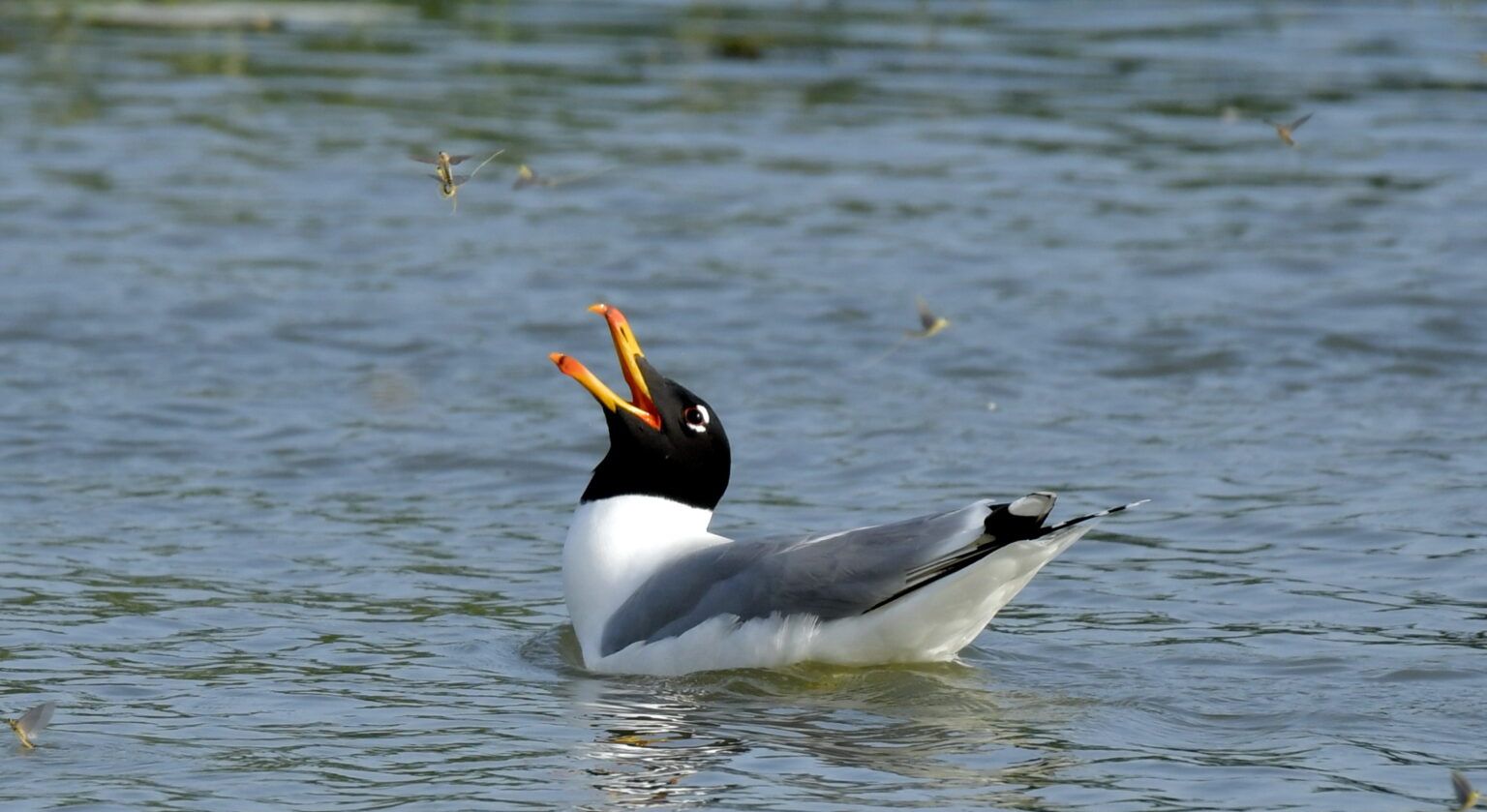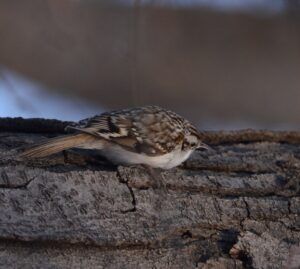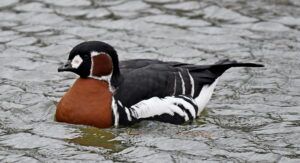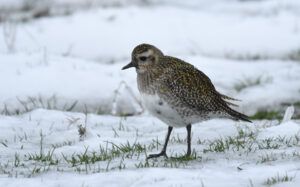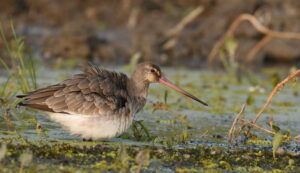The Pallas’s Gull or Great Black-headed Gull, Ichthyaetus ichthyaetus, is a large gull. As is the case with many gulls, it has traditionally been placed in the genus Larus.
This species breeds in colonies in marshes and islands from southern Russia to Mongolia. It is migratory, wintering in the eastern Mediterranean, Arabia and India. This gull nests on the ground, laying between two and four eggs.
It occurs in western Europe only as a rare vagrant. In Great Britain a recent review left a single occurrence in 1859 as the only acceptable record of this bird.
This is a very large gull, nearly the size of the largest (the Great Black-backed Gull), and it is easily the world’s largest black-headed gull. It measures 58–70 cm (23–28 in) in length with a 1.4 to 1.7 m (4.6 to 5.6 ft) wingspan. Weight can vary from 0.96–2.1 kg (2.1–4.6 lb), with an average of 1.6 kg (3.5 lb) in males and 1.22 kg (2.7 lb) in females.Summer adults are unmistakable, since no other gull of this size has a black hood. The adults have grey wings and back, with conspicuous white “mirrors” at the wing tips. The legs are yellow and the bill is red.
In all other plumages, a dark mask through the eye indicates the vestiges of the hood. The call is a deep aargh cry. Young birds attain largely grey upperparts quite rapidly, but they take four years to reach maturity.
These birds are predatory, taking fish, crustaceans, insects and even small mammals.
The Pallas’s Gull is one of the species to which the Agreement on the Conservation of African-Eurasian Migratory Waterbirds (AEWA) applies.
photo: Mihai BACIU

